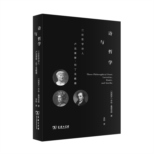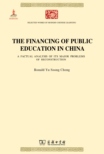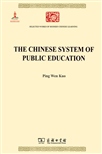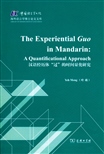TO THE SECOND EDITION OF The Scarlet Letter
Much to the author's surprise, and (if he may say so without additional offence) considerably to his amusement, he finds that his sketch of official life, introductory to <EM>The Scarlet Letter</EM>, has created an unprecedented excitement in the respectable community immediately around him. It could hardly have been more violent, indeed, had he burned down the Custom House, and quenched its last smoking ember in the blood of a certain venerable personage, against whom he is supposed to cherish a peculiar malevolence. As the public disapprobation would weigh very heavily on him, were he conscious of deserving it, the author begs leave to say that he has carefully read over the introductory pages with a purpose to alter or expunge whatever might be found amiss, and to make the best reparation in his power for the atrocities of which he has been adjudged guilty. But it appears to him, that the only remarkable features of the sketch are its frank and genuine good humor, and the general accuracy with which he has conveyed his sincere impressions of the characters therein described. As to enmity, or ill feeling of any kind, personal or political, he utterly disclaims such motives. The sketch might, perhaps, have been wholly omitted, without loss to the public or detriment to the book; but, having undertaken to write it, he conceives that it could not have been done in a better or a kindlier spirit, nor, so far as his abilities availed, with a livelier effect of truth.
The author is constrained, therefore, to republish his introductory sketch without the change of a word.
Salem,
March 30, 1850
Nathaniel Hawthorne (1804—1864) was born in Salem, Massachusetts, his ancestral home, where he spent many years of his youth. His earliest American progenitor had been a judge there and had persecuted the Quakers. The man's son had achieved even greater notoriety when he sentenced a number of innocent people to death as one of the judges at the Salem witchcraft trials in 1692. The deeds of his Puritan forbears seem to have left an indelible impression on Hawthorne for he repeatedly turned to the history of New England for inspiration in his fiction, particularly to that of Salem. There is no evidence that he was influenced by Puritan religious views but he was undoubtedly both fascinated and repelled by the Puritan mind and its moral and psychological concerns. Hence the preoccupation in his fiction with such themes as original sin, the effects of sin and guilt on the sinners themselves or on their posterity, and the conflict between the ‘head’, (representing cold intellect)and the ‘heart’, (human affections).
Two of these themes — guilt and its consequences, and the conflict between the head and the heart — are embodied in The Scarlet Letter (1850), his best-known work. The story is set in seventeenth-century Boston. In the Custom-House introductory, Hawthorne, who worked there from 1846-1849, pretends to have found an embroidered ‘A’ together with documents testifying to one Hester Prynne's sin of adultery in the seventeenth century. This leads into the story proper, supposedly reconstructed from the evidence he found.
Hester is married but for unknown reasons at the time, her husband has not joined her in the colony. She falls in love with Dimmesdale, her Puritan minister, which results in adultery. Unable to hide her sin after she becomes pregnant, she confesses, refusing to disclose, however, the name of the child's father. The story opens when Hester first appears outside the local prison wearing a scarlet‘A’ on her breast, the mark of her shame. Ostracized by the community, she nevertheless bears her punishment courageously, expiating her sin by performing good deeds so that the community gradually alters its attitude to her.
Dimmesdale, on the other hand, dares not confess. Though weighed down by the secret knowledge of his guilt and hypocrisy, he is fearful of the consequences of confession, which would be much more severe for him. As for the wronged husband, Chillingworth, his pride is deeply wounded. He is determined to leave no stone unturned to seek out the adulterer and destroy his peace of mind. Thus the story pivots not on adultery but on its psychological consequences.
However, to summarize the characters in such cursory fashion is to deny their rich complexity and the ambivalence of their portrayal. For instance, while it is true that Hester Prynne has confessed her sin of adultery and is doing penance for it, it is equally true that she has not repented. What others mistake for her repentance——her uncomplaining submission when scorned and derided by the crowd or when publicly castigated and made the text of a discourse, and her compassion for the poor and the sick, which gradually wins for her the approval of the townspeople——is mere outward penance, which serves to hide the bitterness and wild speculation in her heart. As the omniscient narrator points out, "The scarlet letter had not done its office." On the contrary, the painful reminder only rouses hatred and rebellion in her sensitive and passionate nature. Unable to reveal her feelings, Hester has to bury them in her heart.
Yet Hawthorne does not regard her as a hypocrite. Her unconventional thoughts are seen as the results of her ostracism. Standing alone in society her life has turned from passion and feeling to thought. He even suggests that had it not been for Pearl's restraining influence, she might not have stopped at subversive thought. He denounces the rigid society that forces people to hide their true feelings and adopt double standards. He even sympathizes with Hester, whose selfless love does not deserve such severe punishment, but he does not condone her adultery. Though their love is sincere, Dimmesdale and Hester have violated the Ten Commandments and must pay for it. Hester has already been punished for her passion; Dimmesdale, too, must be punished before his sins, which are greater than Hester's, can be absolved.
Another theme which is woven into the tale is the conflict between the head and the heart. This is a common theme with Hawthorne, who distrusts cold intellect that has been separated from human emotions, especially when it attempts to peer into the privacy of the human heart. The lovers, Hester and Dimmesdale, are portrayed with sympathy and compassion for while they have sinned, their misguided conduct is caused by natural feelings of love. For Hawthorne, Chillingworth's sin is much greater because it is prompted by his self-righteousness and cold, prying curiosity. As Dimmesdale cries to Hester: "We are not the worst sinners in the world. There is one worse than even the polluted priest! That old man's revenge has been blacker than my sin. He has violated in cold blood, the sanctity of a human heart. Thou and I, Hester, never did so!" And Hester replies fervently: "Never, never ! What we did had a consecration of its own .... "
The structure of The Scarlet Letter also deserves attention. The three scaffold scenes, each with Hester, Dimmesdale and their illegitimate child, Pearl, on the scaffold, while Chillingworth stands below, form a framework for the story and appear at crucial points in
the plot to drive the action forward. The first scaffold scene occurs at the beginning of the story when Hester is forced to stand on the scaffold with her baby as a punishment to herself and a warning to others. She refuses to reveal her lover's name when publicly questioned by the minister, enabling him to continue to conceal his guilt. It is also when she is there that her newly-arrived husband catches sight of her, learns what she has done, and vows revenge on the man who has cuckolded him. This paves the way for his fiendish torment of the priest.
The second scaffold scene appears exactly in the middle of the book when Hester and Pearl accidentally come across Dimmesdale a number of years later doing penance on the scaffold. Hester is shocked by his emaciated condition, realizing the cause. She seeks out Chillingworth, begs him to stop his persecution, but to no avail. Forced into action to save the man she still loves, she waylays him in the forest to reveal the identity of his tormentor. She then persuades him to escape from his misery by fleeing to Europe with her. Later, Dimmesdale believes he has sold himself to the Devil and after much anguish, finally ascends the scaffold at the end of the book and confesses his guilt publicly just before he dies.
The Scarlet Letter is outstanding for Hawthorne's use of symbols, which adds significance and complexity to the theme. He leads us to ponder over the significance of the wild rose bush beside the prison door, of the forest beyond the town and over the meaning of the letter ‘A’ on Hester's breast that is initially identified with ‘Adulteress’ by the community but that later comes to represent‘Able’ to them, and to have the effect of the cross on a nun's breast, something quite contrary to the judges' intention when they compelled Hester to wear it. As the living embodiment of the scarlet letter, Hester's daughter, Pearl, has a symbolic function as well. She is the evidence and constant reminder of her mother's sin, as well as the emblem of her love. She brings both happiness and torture to her mother, and is both her blessing and retribution. Other objects endowed with symbolic meaning (such as names, places, even to some extent, the major characters themselves)abound in the work, so much so that it has been regarded by some critics as allegorical.
The economy of the scenes, steady focus on the three main characters, insightful psychological analysis, complexity and ambiguity, dark, gloomy atmosphere as well as brilliant structure and skilful use of symbols, all combine to make The Scarlet Letter Hawthorne's masterpiece, and a rewarding work to read even today, over a hundred and forty years after its publication.
Qian Qing (钱青)
Introduction
Preface to the Second Edition of <EM>The Scarlet Letter</EM>
The Custom House, Introductory to <EM>The Scarlet Letter</EM>
1. The Prison Door
2. The Market Place
3. The Recognition
4. The Interview
5. Hester at Her Needle
6. Pearl
7. The Governor's Hall
8. The Elf-Child and the Minister
9. The Leech
10. The Leech and His Patient
11. The Interior of a Heart
12. The Minister's Vigil
13. Another View of Hester
14. Hester and the Physician
15. Hester and Pearl
16. A Forest Walk
17. The Pastor and His Parishioner
18. A Flood of Sunshine
19. The Child at the Brookside
20. The Minister in a Maze
21. The New England Holiday
22. The Procession
23. The Revelation of the Scarlet Letter
24. Conclusion





